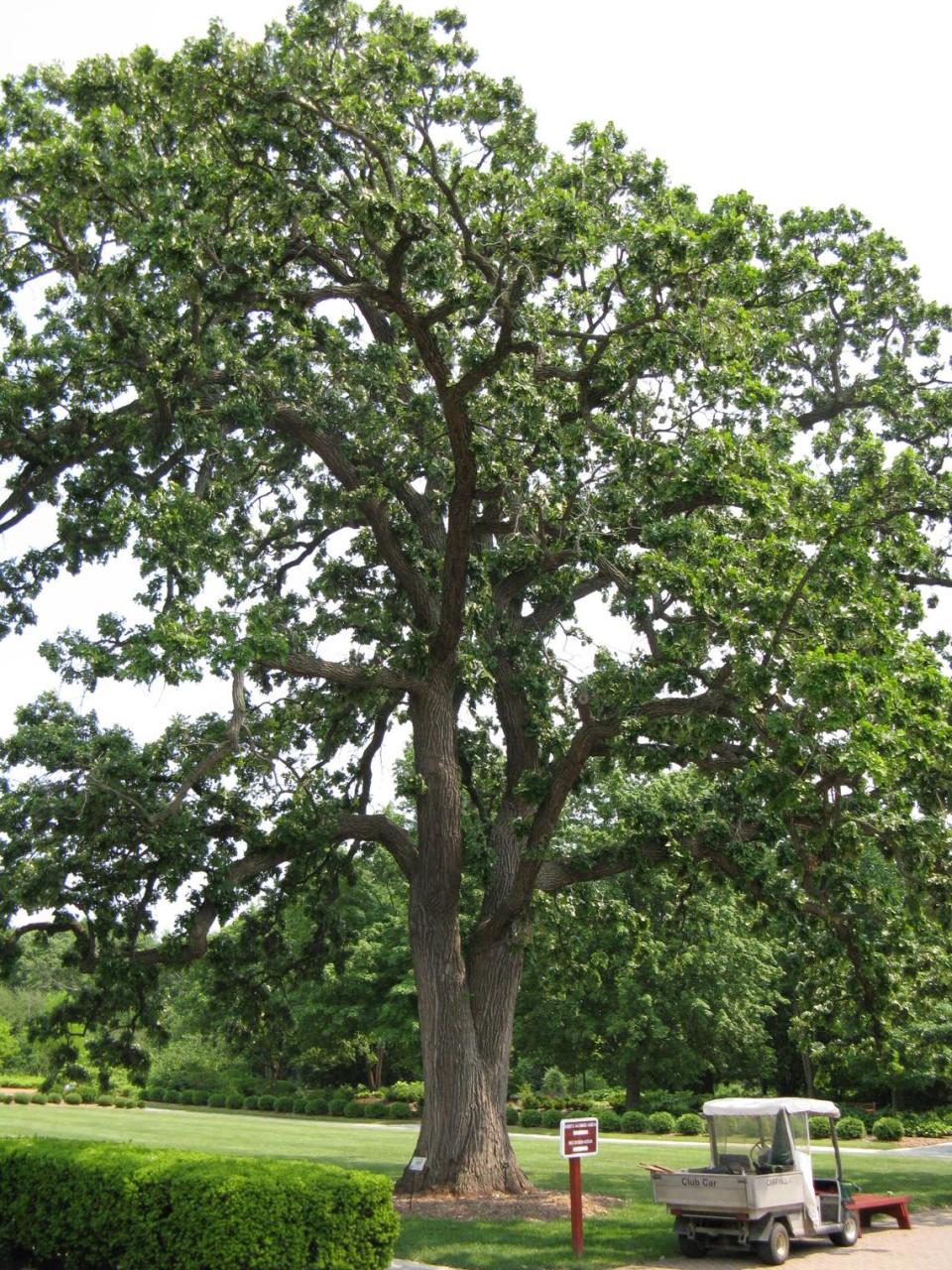The old oak is gone. When progress triumphs over nature, it’s time for prudent action
We mourn for many things throughout our lives: the loss of a beloved family member, a cherished pet and even a treasured plant. For the past 15-plus years, I have passed by a beautiful tree on my way home from work.
This magnificent and stately burr oak stood proudly on a rocky outcropping and towered over the surrounding area. Unfortunately, its life ended too soon in the interest of progress — the expansion of a busy highway to ease traffic congestion.
From the outpouring of support to keep the oak, I discovered I was not the only one who found beauty in that tree. Why did this beautiful oak that stood for decades need to be cut down? What is more important, nature or progress? We all know the answer is often progress.
Trees are vital to a healthy ecosystem and provide many benefits. We are taught this in elementary school. But that alone cannot save a tree. Development usually wins out. Why, you ask? The answer is simple. An individual tree is not that special.
It is unique to those of us who appreciate trees, but beauty does not surpass progress. For a tree to be considered remarkable, it usually must have had a historically significant life-changing event occur around it. For example, a historic treaty was signed near it. Then it may be considered for more than its beauty, age and contributions to the environment.
This was the end for this massive oak tree. I mourn its loss and the fact that it will take 50 to 100 years for another tree to reach a similar stature so that someone else can enjoy the grandeur of old trees.
We call this progress, but the absolute travesty will be if this moment passes without a call to action. That action is to plant new trees. This tree was planted by nature, probably by a forgetful squirrel who happily buried an acorn for a winter snack.
Little untouched nature is left for those squirrels to plant nuts that could become future trees. Instead, we need to be the squirrels and plant more trees. Let’s turn our mourning into action and instead become part of the solution.
Let’s not plant just any tree. Let’s plant one that is not only pretty but also benefits nature.

Join the push to plant natives. This burr oak was more than just another tree. Oak species are considered keystone species and provide habitat support to hundreds of creatures. They are the backbone of the food web, from the smallest insects and larvae that feed on the foliage, to the hungry birds that feed on them, to all of the birds and mammals that rely on the acorns.
Try to avoid non-native species like ginkgo or zelkova. While these trees can be beautiful and provide some benefits, they do not support our vital food chain for a healthy environment. Remember, we must always consider the right tree for the correct location. An ill-planted selection will create new problems, lead to missed opportunities and the tree will likely experience an early demise.
Yes, I will miss that tree towering over the intersection. I will feel an emptiness, not seeing its strong silhouetted beauty. Yes, I will feel for the creatures that once called the tree home and depended on it for nourishment. But I will mourn even more if we don’t plant new trees for future generations to appreciate.
Dennis Patton is a horticulture agent with Kansas State University Research and Extension. Have a question for him or other university extension experts? Email them to garden.help@jocogov.org.

